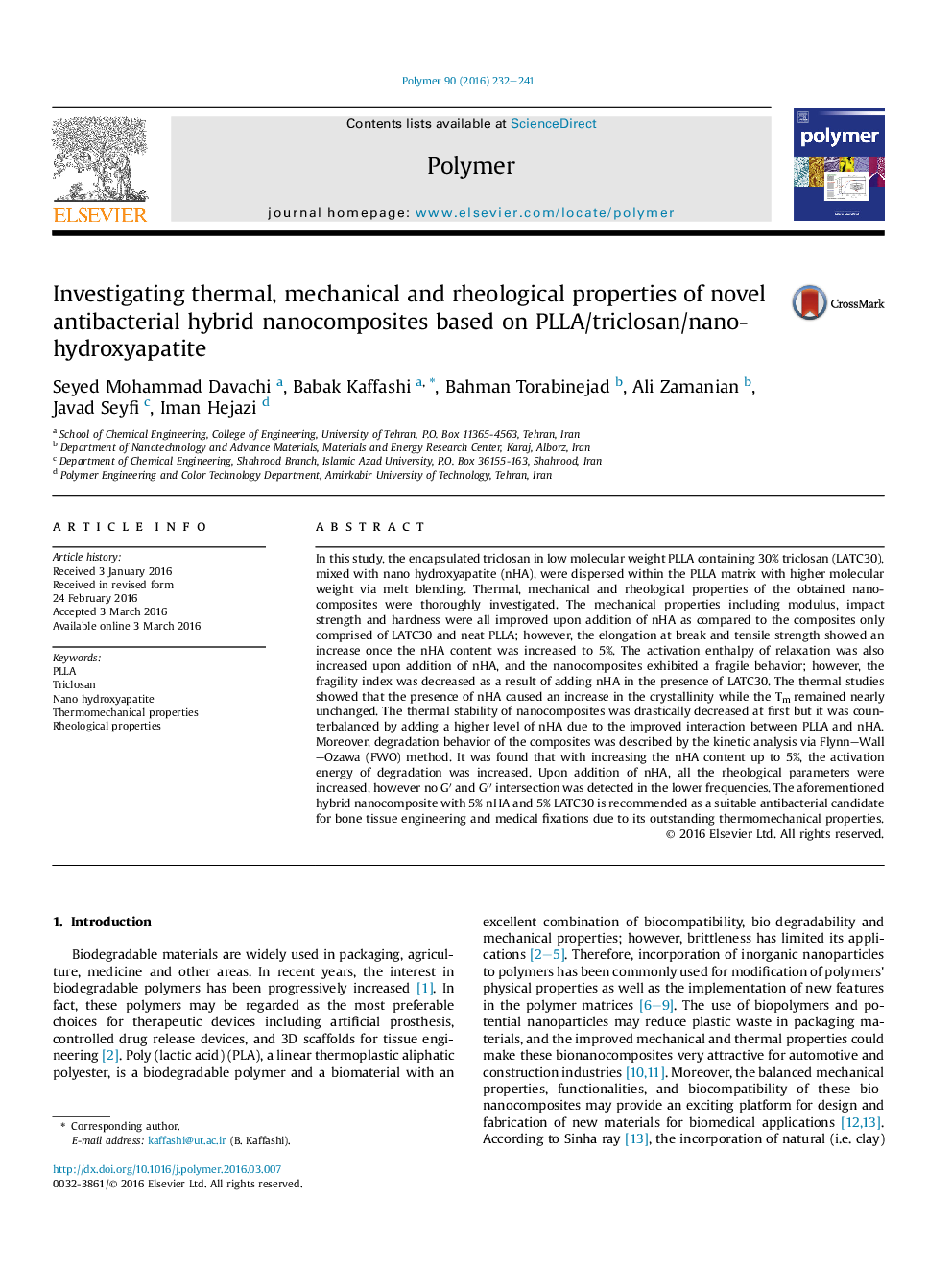| کد مقاله | کد نشریه | سال انتشار | مقاله انگلیسی | نسخه تمام متن |
|---|---|---|---|---|
| 5179148 | 1502516 | 2016 | 10 صفحه PDF | دانلود رایگان |

- Mechanical properties showed improvement upon addition of 5% nHA.
- The activation enthalpy of relaxation was increased upon addition of nHA.
- Nanocomposites showed fragile behavior, and addition of nHA decreased fragility.
- Both activation energy and crystallinity were increased upon addition of 5% nHA.
- The nanocomposite at optimum content is suitable for bone tissue engineering and medical implants.
In this study, the encapsulated triclosan in low molecular weight PLLA containing 30% triclosan (LATC30), mixed with nano hydroxyapatite (nHA), were dispersed within the PLLA matrix with higher molecular weight via melt blending. Thermal, mechanical and rheological properties of the obtained nanocomposites were thoroughly investigated. The mechanical properties including modulus, impact strength and hardness were all improved upon addition of nHA as compared to the composites only comprised of LATC30 and neat PLLA; however, the elongation at break and tensile strength showed an increase once the nHA content was increased to 5%. The activation enthalpy of relaxation was also increased upon addition of nHA, and the nanocomposites exhibited a fragile behavior; however, the fragility index was decreased as a result of adding nHA in the presence of LATC30. The thermal studies showed that the presence of nHA caused an increase in the crystallinity while the Tm remained nearly unchanged. The thermal stability of nanocomposites was drastically decreased at first but it was counterbalanced by adding a higher level of nHA due to the improved interaction between PLLA and nHA. Moreover, degradation behavior of the composites was described by the kinetic analysis via Flynn-Wall-Ozawa (FWO) method. It was found that with increasing the nHA content up to 5%, the activation energy of degradation was increased. Upon addition of nHA, all the rheological parameters were increased, however no Gâ² and Gâ³ intersection was detected in the lower frequencies. The aforementioned hybrid nanocomposite with 5% nHA and 5% LATC30 is recommended as a suitable antibacterial candidate for bone tissue engineering and medical fixations due to its outstanding thermomechanical properties.
Journal: Polymer - Volume 90, 4 May 2016, Pages 232-241